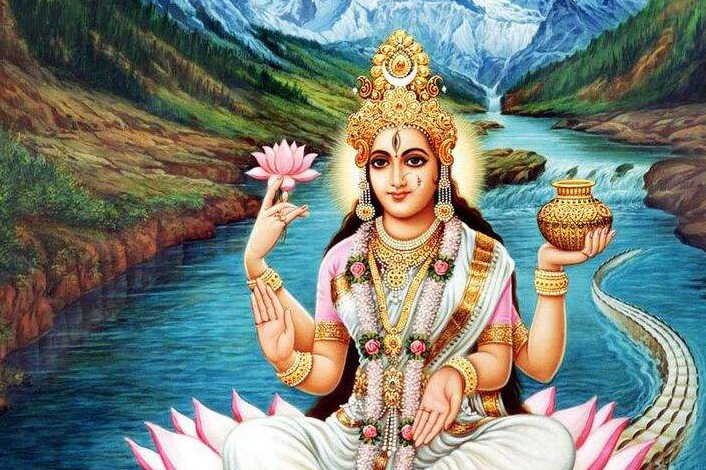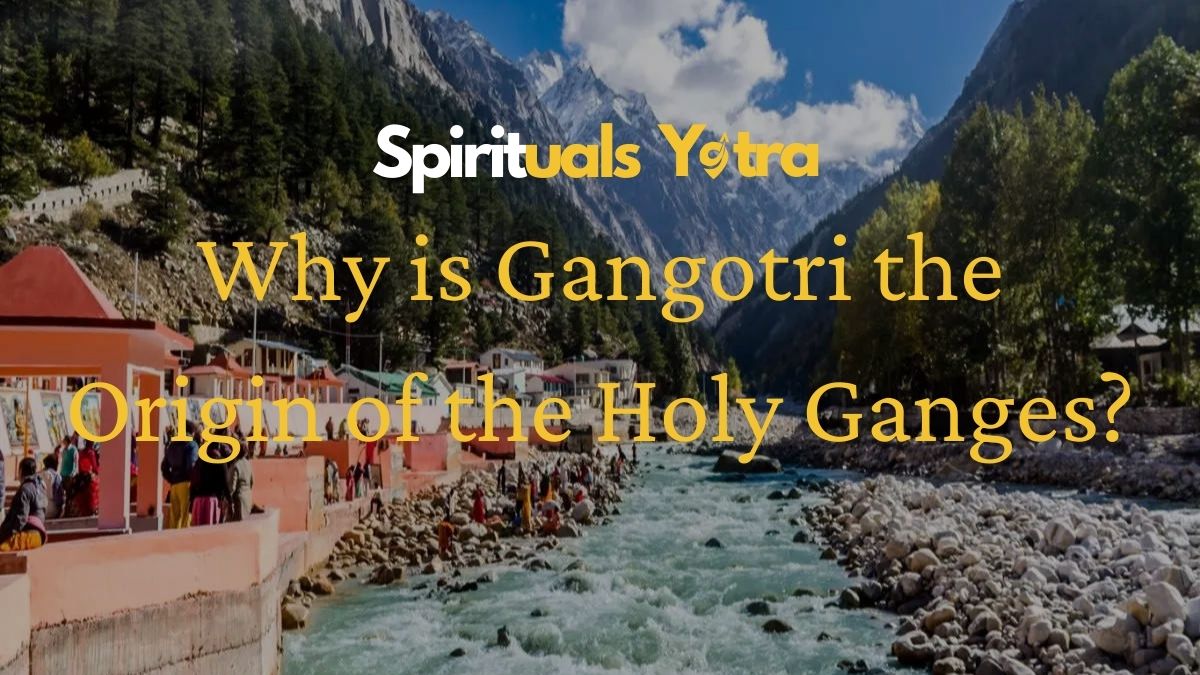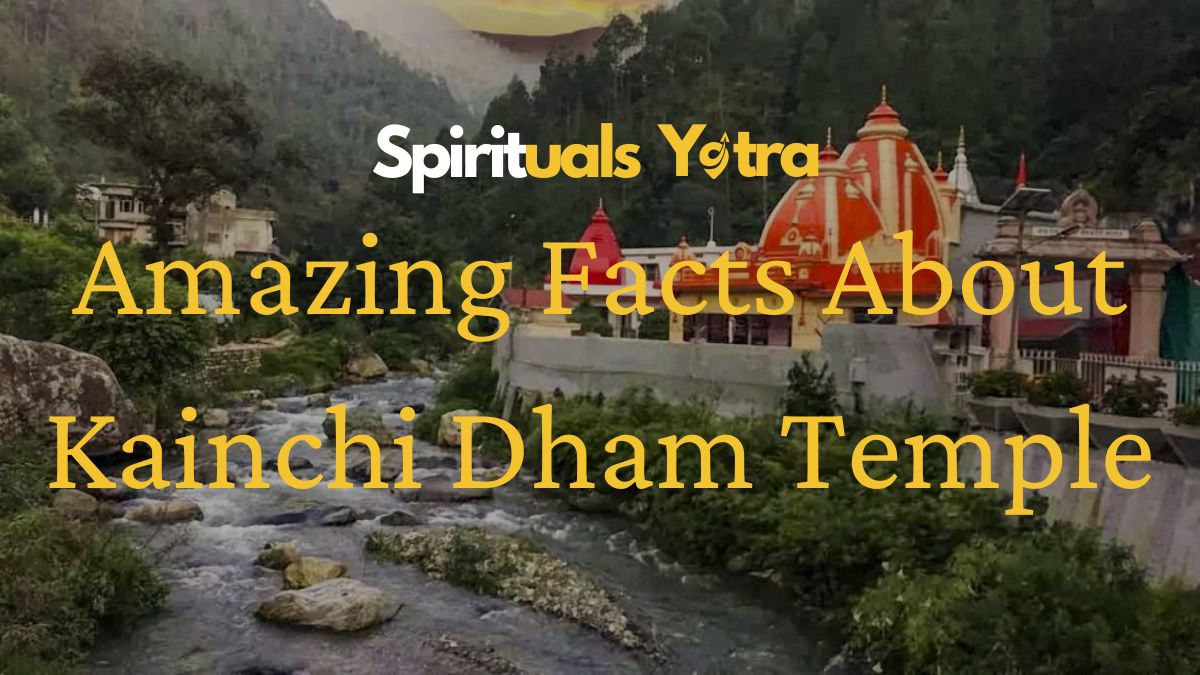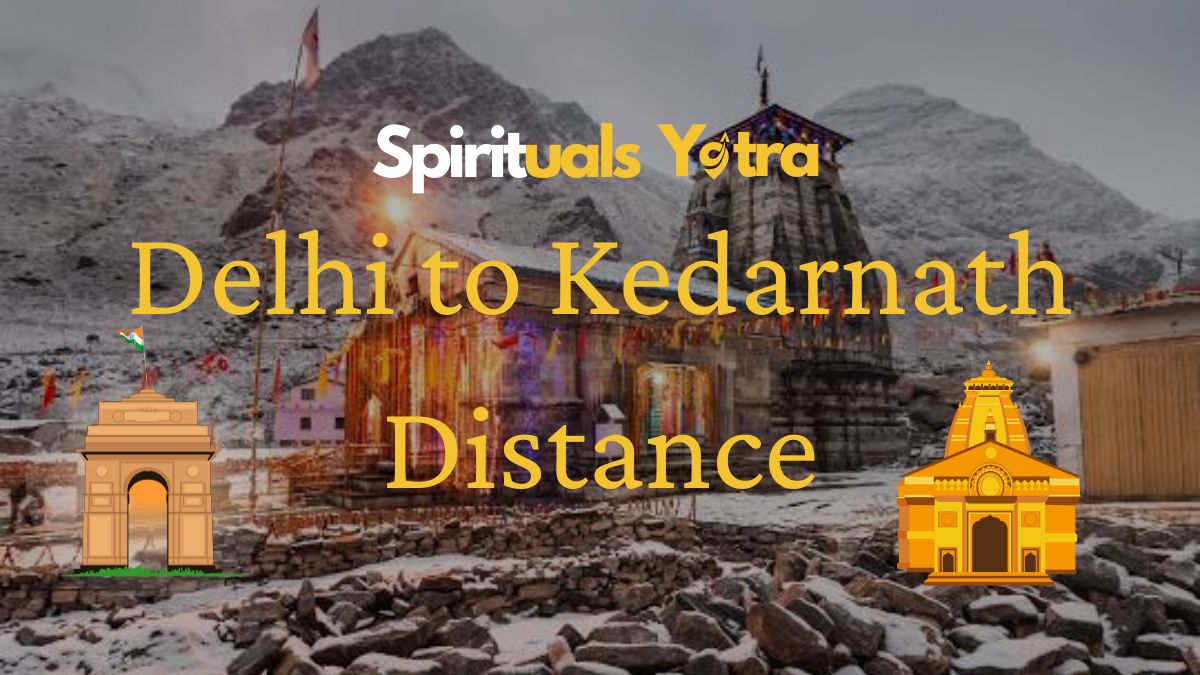Gangotri is much more than a geographical landmark—it is the revered birthplace of the sacred Ganges River. Nestled in the heart of the Greater Himalayas in Uttarakhand, India, this ancient site holds profound spiritual, mythological, and geographical significance. In this blog, we will explore the multifaceted reasons why Gangotri is celebrated as the origin of the holy Ganges, delving into its divine legends, natural marvels, and its role in cultural and pilgrimage practices.
Introduction
Gangotri is a town steeped in ancient lore and natural beauty. Located at an altitude of approximately 3,100 meters (10,200 feet), it is not only one of the highest pilgrimage sites in India but also the starting point of the Bhagirathi River. As the headstream of the Ganges, Gangotri has been venerated for centuries. Hindus believe that the sacred river—personified as the goddess Ganga—descended from the heavens at this very spot, bestowing purity, salvation, and spiritual renewal upon all who come into contact with its waters.

Spiritual Significance of Gangotri
The Divine Descent of Goddess Ganga
One of the core beliefs that underscore Gangotri’s sanctity is the myth of Goddess Ganga’s descent to Earth. According to Hindu mythology:
- Heavenly Origins: The Ganges was originally a celestial river, flowing in the heavens. It was destined to descend to Earth to purify the souls of humanity.
- King Bhagiratha’s Penance: The legend recounts how King Bhagiratha performed severe penance to bring the river down to Earth. His determination was driven by the need to cleanse the sins of his ancestors, which had condemned them to a cycle of rebirth.
- Divine Intervention: The descent of Ganga was a divine act. Moved by Bhagiratha’s devotion, the goddess agreed to descend, though her mighty force threatened to devastate the Earth. Lord Shiva, in an act of compassion, caught her in his matted locks and released her gently, ensuring that her descent would be both life-affirming and purifying.
This sacred narrative not only illustrates the divine origin of the river but also highlights its role as a purifier of sins—a theme that resonates deeply with devotees seeking redemption and spiritual renewal.
Penance and Purification
The spiritual ethos of Gangotri is anchored in the concept of purification. Devotees believe that bathing in the holy waters of the Bhagirathi can cleanse both physical and spiritual impurities. The act of taking a dip in this sacred river is seen as a rite of passage, symbolizing rebirth and liberation from past misdeeds.
- Symbol of Redemption: The water of the Ganges is considered a living embodiment of divine grace.
- Path to Moksha: Immersion in the Bhagirathi is believed to absolve sins from not only the present life but also from previous ones, thereby paving the way to attain moksha (liberation).
- Spiritual Connection: The ritualistic bathing transcends mere physical cleansing; it reconnects the devotee with ancient spiritual traditions and the divine narrative of Ganga’s descent.
Mythological Origins and Divine Legends

The Legend of Goddess Ganga
The myth of Ganga’s descent is rich with symbolism and divine intervention. It tells of a celestial event where:
- Celestial to Terrestrial: Ganga, a goddess of extraordinary purity and power, left her celestial abode to grace the earthly realm with her presence.
- The Role of Bhagiratha: King Bhagiratha’s intense meditation and unwavering devotion were instrumental in convincing the gods to bring Ganga down to Earth. This act of penance was not merely a personal sacrifice—it was a mission to redeem his entire lineage.
- Divine Moderation: To mitigate the destructive force of the Ganges, Lord Shiva intervened by capturing the river in his hair, symbolizing both protection and controlled release of divine energy.
Other Mythical Narratives
Beyond the primary legend, several other narratives contribute to Gangotri’s mystical aura:
- King Sagar and the Ashvamedha Yajna: One legend involves King Sagar, whose desire to perform the grand Ashvamedha Yajna inadvertently set the stage for the Ganges’ descent. His actions and the subsequent curse on his 60,000 sons are intricately linked to the river’s journey.
- Birth from Brahma’s Kamandalu: In another version, it is said that Ganga emerged from the water pot of Lord Brahma, where waters collected from the feet of Lord Vishnu were kept. This narrative underscores the sacred origins of the river, weaving it into the broader tapestry of Hindu cosmology.
| Key Mythological Elements |
| Divine descent of Ganga from the heavens. |
| King Bhagiratha’s rigorous penance to cleanse ancestral sins. |
| Lord Shiva’s role in safely moderating the descent. |
| Legends involving King Sagar and the Ashvamedha Yajna. |
| Alternate narratives of Ganga’s birth from Brahma’s kamandalu. |
Geographical Marvel: The Source of the Ganges

The Gangotri Glacier and Bhagirathi River
Gangotri’s physical geography is as awe-inspiring as its spiritual legacy. The Bhagirathi River, which begins its journey at the Gangotri Glacier, is the lifeline that eventually transforms into the mighty Ganges. Here’s what makes this geographical setting so significant:
- Gangotri Glacier:
- Located at high altitudes, this glacier is a colossal mass of ice that feeds the Bhagirathi River.
- It stands as a symbol of nature’s grandeur and resilience, offering a continuous supply of meltwater that sustains the river throughout the year.
- Gomukh – The ‘Cow’s Mouth’:
- The literal source of the Bhagirathi is known as Gomukh. This sacred spot, named for its resemblance to a cow’s mouth, marks the precise origin of the river.
- Pilgrims often embark on challenging treks to Gomukh, reaffirming their devotion and connection to nature’s raw beauty.
The Confluence of Nature and Divinity
The geographical features of Gangotri not only contribute to the river’s physical existence but also enhance its spiritual symbolism:
- Natural Purity: The pristine, glacial waters of the Bhagirathi are believed to carry the blessings of the heavens.
- Symbol of Life: The constant flow of water represents the cycle of life, renewal, and the eternal flow of time.
- Himalayan Majesty: Surrounded by towering peaks and serene valleys, Gangotri is a testament to the symbiosis between nature and spirituality.
| Geographical Significance |
| Gangotri Glacier: The source of the Bhagirathi River. |
| Gomukh: The sacred origin point, accessible to pilgrims. |
| Pristine natural environment enhancing spiritual purity. |
| High-altitude landscapes contributing to the river’s mystique. |
Cultural and Ritualistic Importance
Gangotri as a Pilgrimage Hub
Gangotri is an integral part of the Chota Char Dham Yatra, a revered pilgrimage circuit that also includes Yamunotri, Kedarnath, and Badrinath. Its cultural importance is reflected in several aspects:
- Religious Festivals and Rituals:
- Regular rituals are performed on the banks of the Bhagirathi, believed to offer salvation and liberate souls from the cycle of rebirth.
- Festivals such as Gangotri Mela draw thousands of devotees who celebrate the divine descent of Ganga.
- Temple Architecture:
- The Gangotri Temple, dedicated to Goddess Ganga, is an exquisite example of traditional Hindu architecture.
- Its intricate carvings, serene ambiance, and strategic location on the riverbank make it a focal point for spiritual activities.
- Spiritual Healing:
- Devotees come to Gangotri not only to seek blessings but also to participate in rituals that promote physical and spiritual healing.
- Many believe that the sacred waters have curative properties and can cleanse the soul of past misdeeds.
| Cultural Highlights |
| Integral part of the Chota Char Dham Yatra. |
| Regular rituals and festivals that celebrate the goddess. |
| Architecturally significant Gangotri Temple. |
| Belief in the healing and purifying powers of the river. |
Natural Beauty and Its Impact on the Pilgrimage Experience
The Scenic Splendor of Gangotri
Beyond its religious significance, Gangotri is renowned for its breathtaking natural beauty. The landscape around Gangotri provides a tranquil setting that enhances the spiritual experience:
- Majestic Himalayan Peaks:
- The backdrop of snow-capped mountains creates a majestic and serene environment.
- These peaks are not only awe-inspiring but also serve as a constant reminder of the power and grandeur of nature.
- Lush Valleys and Clear Skies:
- The surrounding valleys are lush with greenery during the warmer months, providing a stark contrast to the rugged terrain of the high Himalayas.
- The clear, blue skies add to the sense of calm, making it an ideal place for meditation and reflection.
- The Soothing Flow of the Bhagirathi:
- The gentle yet persistent flow of the river provides a natural soundtrack to the pilgrims’ journey.
- The rhythmic sound of water cascading over rocks helps induce a meditative state, allowing visitors to connect deeply with their inner selves.
How Nature Inspires Devotion
The harmonious blend of rugged terrain and serene waterways at Gangotri creates an atmosphere that is conducive to introspection and spiritual growth:
- Sense of Isolation:
- The remote location of Gangotri allows pilgrims to disconnect from the hustle and bustle of everyday life.
- This isolation is seen as a divine gift, offering a space for uninterrupted meditation and prayer.
- A Living Canvas of Devotion:
- Every element of nature—from the towering mountains to the flowing river—appears imbued with divine energy, inspiring reverence in all who visit.
Practical Guide for Pilgrims and Tourists
Planning Your Visit
Whether you are a devout pilgrim or a curious traveler, a visit to Gangotri can be a transformative experience. Here are some practical tips:
- Best Time to Visit:
- The ideal period to explore Gangotri is between May and October when the weather is relatively mild and the path is accessible.
- The temple remains open from Akshaya Tritiya until Diwali; plan your trip accordingly to experience the full vibrancy of the pilgrimage season.
- Travel and Accommodation:
- Gangotri is accessible by road from Uttarkashi, which is well-connected by buses and taxis from cities like Rishikesh, Haridwar, and Dehradun.
- Pilgrims can choose from a variety of guesthouses, dharamshalas, and small hotels. Keep in mind that modern amenities might be limited due to its remote location.
- Health and Safety:
- Given its high altitude, visitors should be mindful of altitude sickness. Carry necessary medications and ensure you acclimate properly before venturing into higher regions.
- Pack warm clothing, especially if visiting during the shoulder seasons when the weather can be unpredictable.
| Essential Tips for Visitors |
| Visit during May–October for optimal weather. |
| Plan transportation via Uttarkashi from major cities. |
| Book accommodations in advance during peak pilgrimage seasons. |
| Be prepared for altitude and variable weather conditions. |
Frequently Asked Questions
What Makes Gangotri So Special?
Gangotri’s significance lies in its dual role as both a sacred pilgrimage site and a geographical marvel. It is revered as the point where the celestial river Ganga descends to Earth, bringing with it the power of purification and spiritual renewal.
Where Exactly is Gangotri Located?
Gangotri is situated in the Uttarkashi district of Uttarakhand, India, at an altitude of about 3,100 meters (10,200 feet). It is part of the Greater Himalayan Range and is the origin of the Bhagirathi River, which eventually becomes the Ganges.
How Do Pilgrims Reach Gangotri?
Travelers typically reach Gangotri by first arriving in Uttarkashi, which is accessible by road from major cities like Rishikesh, Haridwar, and Dehradun. From Uttarkashi, local transport connects visitors to Gangotri, making the journey an integral part of the pilgrimage experience.
What Are the Key Rituals Associated with Gangotri?
Devotees engage in various rituals including:
Bathing in the Bhagirathi: Believed to purify both body and soul.
Offering Prayers at the Gangotri Temple: Dedicated to Goddess Ganga.
Participating in Seasonal Festivals: Celebrating the divine descent of the river.
Is Gangotri Safe for Tourists?
Yes, Gangotri is generally safe for both pilgrims and tourists. However, given its high-altitude location, it is advisable to be cautious of altitude sickness and to follow local guidelines for trekking and outdoor activities.
Conclusion
Gangotri stands as a timeless symbol of divine intervention, where mythology and nature converge to create a sanctuary of spiritual purity. Its significance as the origin of the holy Ganges is rooted in a rich tapestry of ancient legends—stories of a goddess descending from the heavens, a king’s relentless penance, and the natural marvel of a glacier-fed river carving its way through the Himalayas.
For centuries, this sacred site has been a beacon for those seeking purification, inner peace, and a connection with the divine. The natural beauty of the region, combined with its deep cultural and religious heritage, makes Gangotri not only a pilgrimage destination but also a living testament to the enduring legacy of Hindu spirituality.




